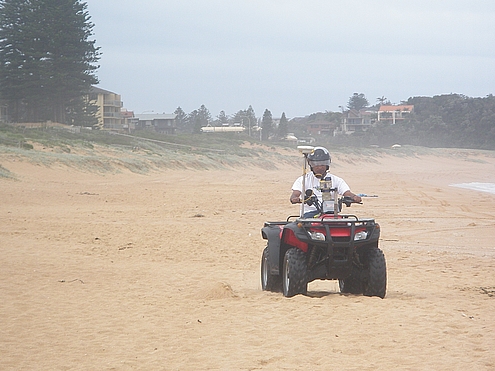A research team comprising Rosh Ranasinghe and his colleagues from TU Delft, UNESCO-IHE and Deltares has developed a new model that is capable of producing highly accurate prognoses of coastline erosion caused by sea-level rise within few minutes.
 Work in progress: Rosh Ranasinghe measuring on Narrabeen Beach, Sydney
Work in progress: Rosh Ranasinghe measuring on Narrabeen Beach, Sydney
The study findings have appeared in the online edition of Nature Climate Change. Coastline erosion caused by rising sea levels are usually measured and estimated on the basis of a given sea-level rise using the Bruun effect. Nevertheless, it is difficult to produce the prognoses for coastlines nearby inlets like river mouths, estuaries and lagoons as they are affected by other issues such as variations in rainfall caused by climate change and some compensating effects such as basin infilling.
The new model takes all these factors into consideration in the prognosis of a coastline's future development. The researchers applied the new model to four various and representative coastal regions in Australia and Vietnam. What they discovered was merely 25% to 50% of expected coastline changes in these regions can be estimated utilizing the Bruun effect. The other events that happen in the region of inlets are equally important and coastline erosion in these regions caused by sea-level rise has so far been considerably underrated.
This new model facilitates researchers to more accurately estimate coastline change caused by rising sea levels. It will benefit new coastal management projects that are being commenced shortly as it can play a key role in coastal management and planning.
The Deltares Coastal Maintenance Research Programme is partly supporting the research.